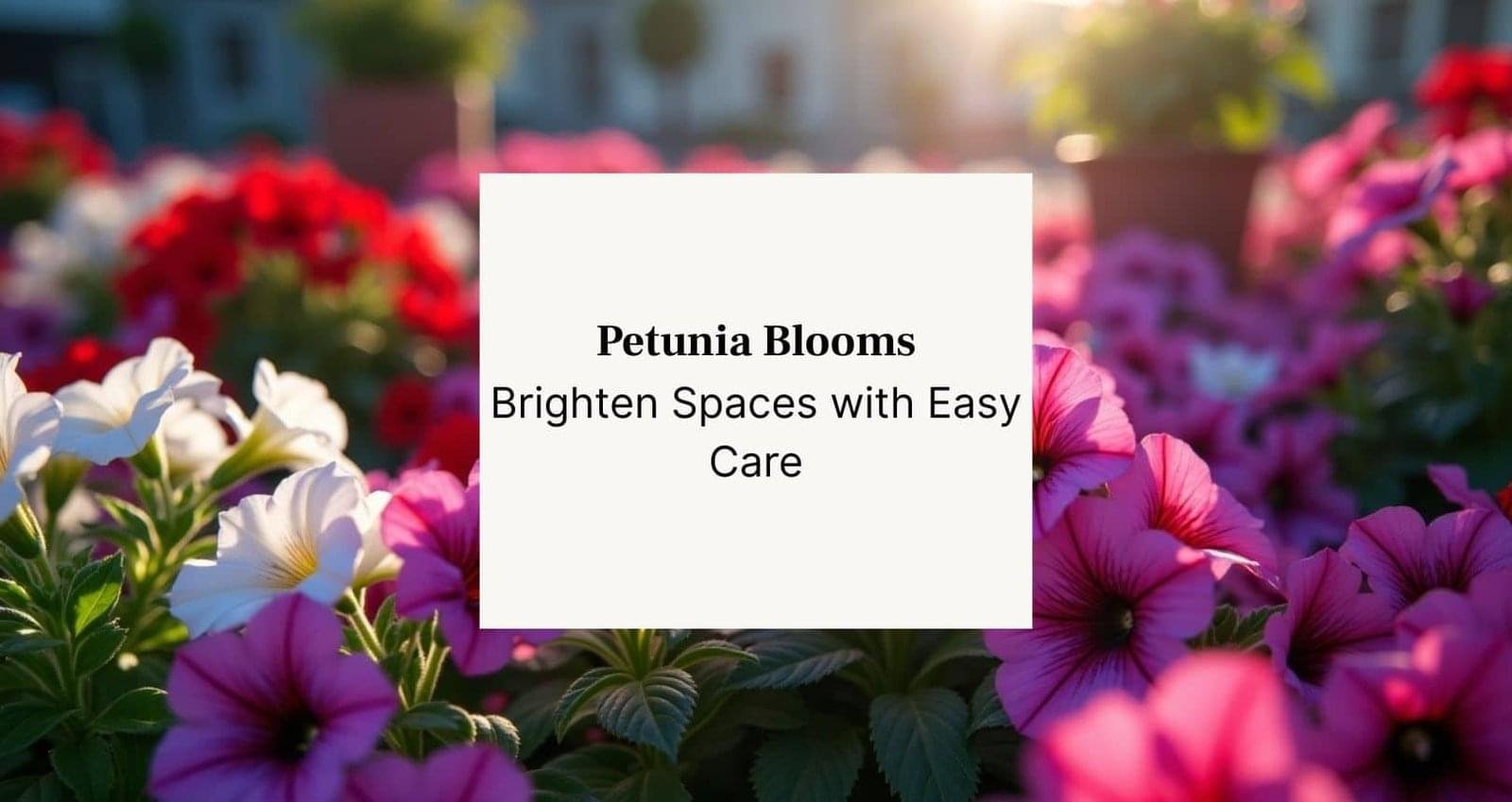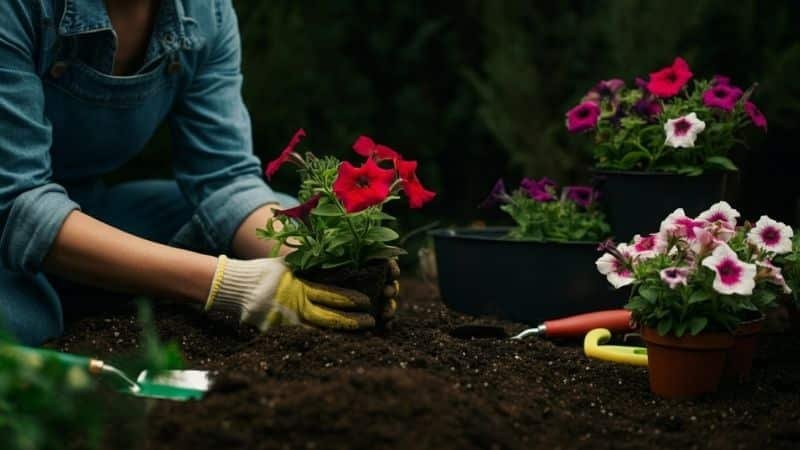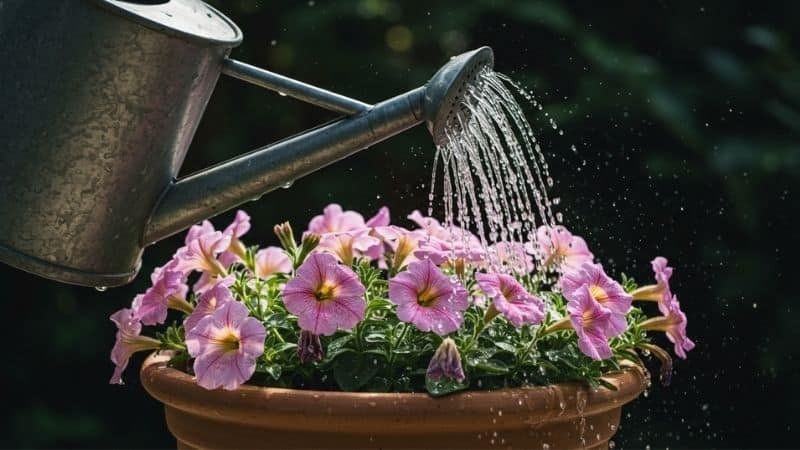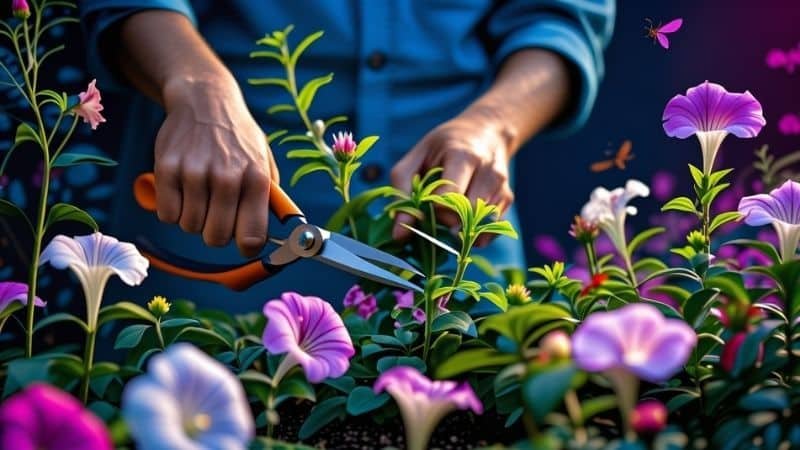Learn how to grow and care for petunias with this complete guide. From planting tips to watering, sunlight, soil, pruning, and seasonal care keep your petunias blooming beautifully.
Learn how to grow and care for petunias with this complete guide. From planting tips to watering, sunlight, soil, pruning, and seasonal care keep your petunias blooming beautifully.

Learn how to grow and care for petunias with this complete guide. From planting tips to watering, sunlight, soil, pruning, and seasonal care keep your petunias blooming beautifully.
When you start growing petunias, the first step is selecting the right variety. There are several types, including Grandiflora, Multiflora, Milliflora, and Wave petunias. Grandiflora varieties produce large, showy flowers but need more care. Multiflora varieties have smaller blooms but are more weather-resistant, making them perfect for windy or rainy areas. Wave petunias are trailing plants that spread quickly and are excellent for hanging baskets or ground cover. By choosing the variety that matches your garden conditions and style, you ensure healthier plants and more consistent blooms.

Petunias thrive in warm seasons and bloom best when planted in spring and summer. They need at least five to six hours of full sunlight every day to grow strong and produce continuous flowers. If planted in shady areas, the blooms may become fewer and the plant may appear weak. The ideal location is a sunny garden bed, balcony, or patio where they receive morning sunlight and some protection from the harsh afternoon sun. Ensuring the right placement is the foundation of long-lasting petunia growth.
Healthy soil is the backbone of every successful plant. Petunias prefer soil that is slightly acidic to neutral with a pH between 6.0 and 7.0. The soil must also be rich in organic matter while remaining well-drained to avoid waterlogging. Before planting, it is best to mix compost, peat moss, or organic manure into the soil to increase nutrients and improve its texture. If you are growing petunias in pots, choose a high-quality potting mix designed for flowering plants. Preparing the soil well at the beginning saves you from plant health problems later on.
Watering petunias requires balance. While these plants need regular watering, they dislike soggy soil. Overwatering can lead to root rot and fungal problems, while underwatering can cause flowers to dry and fade quickly. It is better to water deeply once or twice a week rather than lightly every day. Container-grown petunias usually need more frequent watering as pots dry out faster. Always water at the base of the plant rather than from the top to keep the foliage dry and reduce the risk of disease. Consistency is the key to keeping your petunias hydrated and healthy.

Fertilization plays an important role in keeping petunias blooming from spring until fall. These flowers are heavy feeders, which means they require regular nutrients to maintain their vibrant colors. Use a balanced fertilizer once every two to three weeks for the best results. For potted plants, liquid fertilizers are very effective because they provide quick nourishment. For garden beds, you may use slow-release fertilizers that gradually feed the plants over time. A well-fed petunia plant will reward you with fuller, brighter, and longer-lasting blooms throughout the season.

Pruning and deadheading are simple but powerful techniques to keep petunias looking their best. Deadheading means removing wilted or faded flowers, which encourages the plant to produce new blooms instead of wasting energy on seed production. Light pruning of long or leggy stems helps the plant grow bushier and prevents it from becoming thin and uneven. Regular maintenance not only keeps the plant healthy but also ensures that your garden or balcony always looks fresh and colorful.
Like most plants, petunias can face issues with pests and diseases. Common pests include aphids, caterpillars, and whiteflies, while fungal infections may occur due to overwatering or poor air circulation. To prevent these problems, inspect your plants regularly and act quickly if you notice early signs of damage. Natural remedies such as neem oil or insecticidal soap are safe options for dealing with pests. For fungal issues, ensure proper spacing between plants and avoid watering the leaves. With timely care, your petunias will stay healthy and beautiful all season long.
Petunias are easy to grow, but they reward you with beauty only when cared for correctly. Choosing the right variety, planting them in proper soil, giving them enough sunlight, watering them consistently, and feeding them with fertilizer all play a part in their success. Regular pruning and pest management help keep them strong and blooming for months. With just a little effort, you can enjoy a garden or balcony full of colorful petunias that brighten your home and bring joy every day.